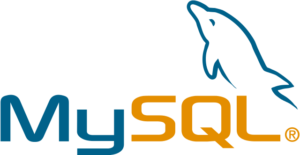Kubernetes Storage Challenges
Key issues with running stateful apps on Kubernetes
- Data persistence: Kubernetes provides a straightforward way to manage application containers, but managing the persistent storage that these containers rely on can be more challenging. Ensuring data persistence across container restarts or pod migrations can be difficult in Kubernetes, especially when using stateful applications.
- Storage resources: One of the core functions of Kubernetes is to manage the allocation of resources such as CPU and memory. However, managing K8s storage resources presents another set of challenges. For example, Kubernetes doesn’t have a native way to manage storage across nodes, which can lead to uneven distribution of resources.
- Data protection: Ensuring that data is protected against loss or damage is critical in any deployment. Kubernetes offers some data protection mechanisms, such as snapshot backups and replication controllers, but these features are not always sufficient for enterprise-grade deployments.
- Performance monitoring: As with any distributed system, monitoring performance is crucial for detecting issues and optimizing resource usage. However, monitoring the performance of storage in Kubernetes can be challenging. Kubernetes does not provide native tools for performance monitoring, which means that additional third-party tools need to be deployed.
- Scalability: Kubernetes can scale horizontally by adding more nodes to a cluster, but this can lead to issues with data availability. Increased load can cause storage nodes to become oversubscribed or even fail, causing data access issues.
- Security: All data stored in a Kubernetes environment must be kept secure and should be accessible only by those with appropriate permissions. To ensure proper security, IT admins must implement robust authentication, authorization, and encryption solutions to protect confidential data. Additionally, regular security audits should be performed to ensure that the environment is not being exploited.
- Cost: The cost of technology and K8s storage solutions such as storage management, replication, and backup solutions must all be factored into the overall cost. To reduce costs and increase scalability, leveraging automated, cloud-native based storage is becoming increasingly popular to reduce technical debt from ticket based deployment routines which need human intervention.
The Benefits of Kubernetes Storage
It may seem like a challenge, but there are a lot of benefits from deploying a Kubernetes storage solution using persistent storage. By leveraging the power of a good Kubernetes storage solution, you can simplify and streamline storage management in Kubernetes environments, while providing a range of benefits such as scalability, resiliency, flexibility, automation, and performance. Here are some of the benefits:
Reduce Complexity: As mentioned above, storage can seem difficult in Kubernetes, but suppose your organization is working with traditional storage solutions on-premises or in the cloud. You’re probably managing multiple platforms in different environments. Each environment requires a slightly different set of skills to learn and maintain.
A good Kubernetes storage solution can help simplify your entire operation. It does this by abstracting the specialized characteristics of your infrastructure and standardizing the storage platform where your data is stored.
Making your Kubernetes storage process simpler can help you lower staffing costs. Plus, your IT team and developers are free to focus on high-level tasks that can make a difference in your bottom line.
Enable Scale: Today’s online businesses are expected to grow faster than ever before. Unfortunately, data storage often creates a bottleneck when enterprises need to scale. Kubernetes storage solutions can help streamline scaling by managing it automatically. For example, many tools offer a way to increase or decrease capacity dynamically based on usage. This enables businesses to capitalize on peak months without investing in storage equipment. Kubernetes storage solutions that are good are highly scalable, enabling you to easily scale up or down the storage resources as needed to accommodate changing workloads without requiring any manual intervention.
Increase Portability: Kubernetes storage also makes data more easily portable. Just like our containerized applications can be moved from one cluster to another, the kubernetes storage can also be moved with our applications without sacrificing integrity. Developers can now easily move applications from testing to production or from internal networks to cloud edge networks because of the standardization that Kubernetes offers across environments.
Improve Data Transfer: One of the key benefits of a good Kubernetes storage solution is its ability to improve data transfer in Kubernetes environments. It can enable data to be efficiently replicated across multiple nodes, which helps to reduce data transfer times and improve overall application performance.
Some Kubernetes storage solutions also offer advanced data management features such as snapshots, backups, and disaster recovery, which can help organizations to protect their critical data against accidental deletion, data loss, or natural disasters. Moreover, these storage solutions help integrate seamlessly with Kubernetes, providing a unified storage layer that can be managed using Kubernetes APIs and tools. This eliminates the need for complex storage management workflows and enables IT teams to focus on delivering value to their business users through self-services interfaces. A powerful storage solution helps organizations to improve data transfer and ensure high availability and consistent performance of their critical applications in Kubernetes environments. By leveraging Portworx, organizations can achieve greater agility, scalability, and efficiency in their containerized application deployments.
Unify Storage and Management: The Kubernetes platform furnishes a mechanism for self service management of your storage solutions. With a good Kubernetes storage solution, users can marry the Kubernetes control plane with your storage services, making them simpler to manage. Instead of dealing with data in separate departments or silos, your IT team can simply use a single platform to manage it. This simplifies management dramatically and frees up your staff to focus on more important tasks. It also gives the advantage of managing and storing the data in one location. Instead of dealing with data in separate departments or silos, your IT teams can simply use a single platform to do it. Storage platforms like Portworx also offer solutions that leverage the management plane of Kubernetes to auto-provision cloud storage when needed.
Manage Hybrid Cloud Environment: It’s not uncommon for large enterprises to have a mix of cloud and on-premises environments. These environments are often very different from each other and incur their own level of technical debt to manage. Having a Kubernetes data storage solution helps to tackle this problem for you by having a single platform to manage everything, regardless of the underlying infrastructure. This gives you the freedom and flexibility to adopt any infrastructure you need, whether it’s an on-premise datacenter, the edge, cloud, or hybrid approach.
Make your business resilient: A good Kubernetes storage solution is also highly resilient to ensure that your data is always available and protected in case of failures or disasters. This is achieved through features such as replication and Kubernetes backup/recovery.
Non-Cloud-Native VS Cloud-Native Kubernetes Storage Solutions
Kubernetes requires a highly dynamic and scalable storage system that can keep up with the demands of a containerized environment. Traditional storage solutions are typically designed for virtualized workloads and may not be able to handle the rate of change required for running containerized applications on Kubernetes. The only way that traditional storage systems can work with Kubernetes is by building a plugin based on the CSI-spec, which is a connector based approach requiring extensive manual configuration and has its own sets of other challenges.
Traditional storage systems using CSI Connector bind Kubernetes volumes to a specific hardware device, making portability of containers difficult in a cloud native environment. Another challenge with the CSI plugin is that it becomes a single point of failure for any new apps deployed on your cluster. It also leads to connection limits when mounting physical LUNs to a Kubernetes worker node. Traditional storage arrays were not designed with containers in mind, they were designed for hosts with full operating systems that didn’t mount datastores frequently. Attaching volumes to hosts was not a frequent operation, but took a few minutes to complete. With the speed in which containers need to start and restart, this connector based approach can’t be as efficient as a storage platform purposefully built for containers.
Finding the Right Cloud-Native Kubernetes Storage Provider
Not all Kubernetes storage solutions are the same. If you’re considering one, here are some essential characteristics to keep in mind when researching Kubernetes storage providers:
Persistent volume
Persistent volume (PV) is a concept in Kubernetes that provides a way to manage and store data separately from the lifecycle of a container. Essentially, it provides a layer of abstraction between the storage used by a container and the underlying infrastructure. This allows for greater flexibility and portability in containerized environments.
It does this by automatically assigning or creating a storage resource to a pod, using a process called persistent volume claim or PVC.
Additionally, persistent volumes can be backed up and restored, providing an additional layer of data protection. Using persistent volumes in Kubernetes also helps to decouple the storage configuration from application deployment. This means that developers can focus on building and deploying their applications, without worrying about the underlying storage infrastructure. It also allows for greater flexibility when it comes to deploying applications across different cloud platforms and environments.
Dynamic provisioning
Dynamic provisioning is an essential feature to consider when selecting a Kubernetes storage provider because it enables the automatic creation of persistent volumes on-demand as soon as an application requests them. This feature simplifies the deployment and management of storage resources in Kubernetes environments, allowing developers to focus on building their applications without worrying about the underlying storage infrastructure.
With dynamic provisioning, K8s storage providers can automatically provision and manage persistent volumes based on predefined storage classes and policies. This means that developers can easily specify the required storage capacity, performance, and redundancy level for their applications and leave the task of creating and managing the required storage resources to the storage provider.
Moreover, dynamic provisioning helps to optimize resource utilization by dynamically allocating storage resources only when needed. This helps to save costs and minimize waste by avoiding the over-provisioning of storage resources.
One more advantage of dynamic provisioning is that it streamlines the process of shifting applications among various Kubernetes clusters, clouds, or platforms. This allows applications to share, meet, and seamlessly transition from one ecosystem to another, free from the stress of managing the underlying storage infrastructure. The storage provider takes care of creating and managing the required persistent volumes.
Quality of services (QoS) via StorageClasses
The right Kubernetes storage provider can provide quality of services via storage classes in a number of ways. Storage classes offer a simplified approach to defining the range of storage options available for applications running on Kubernetes. These storage classes can be customized to provide specific levels of performance and reliability for different types of applications. For example, a storage class might be optimized for high-performance workloads that require low latency and high I/O throughput, while another storage class might be designed for less critical applications that can tolerate lower levels of performance.
One of the main benefits of storage classes is that they allow developers to specify the required level of quality of service (QoS) for their applications. This means that developers can ensure that their applications have access to the appropriate levels of performance and reliability based on their specific needs. For example, if an application requires high levels of availability and reliability, a storage class with a high redundancy level can be used. Conversely, if an application has lower QoS requirements, a storage class with a lower level of redundancy and lower cost can be chosen.
In order to ensure that storage classes are providing the required levels of QoS, storage providers can also offer monitoring and reporting tools that provide visibility into the performance and utilization of storage resources. This can help administrators to identify any issues or bottlenecks that may be impacting the performance of applications, and take steps to address them.
Multiple data access modes
Access modes or patterns govern how pods and nodes interact with a storage resource.
In RWO (Read Write Once), only a single worker node can mount the storage resource for reading and writing data. However, within the node, multiple pods can access the storage data.
In ROX (Read Only Many), multiple worker nodes can mount the storage resource but can only read from it. This is useful for having multiple applications extract data from a common drive.
RWX (Read Write Many) is similar to ROX, but the mode also allows writing data. This is suitable for applications like machine learning and analytics where heavy data processing is involved. However, the system must be equipped to resolve locking problems in this case.
Finally, RWOP (Read Write Once Pod) reserves read and write access exclusively to a single pod.
Having a Kubernetes storage solution that supports all these modes is crucial to maximizing your flexibility. Unfortunately, some vendors will only offer some of these modes, so best to look into them when shortlisting.
Independent storage lifecycle
An important characteristic of a Kubernetes storage system is that it should have a lifecycle that’s independent of clusters, pods, and applications. This can be done through a Persistent Volume Claim (PVC).
A crucial consideration here is the PVC’s reclaim policy. It determines what happens to the storage resource once a pod releases a PVC.
The default reclaim policy is “delete,” which erases the data completely. The second policy is “retain,” which keeps the data.
The latter policy is much more flexible because administrators can perform post-processing on it. For example, that data can be archived first in permanent storage. Or administrators can decide which data should be kept or deleted.
Having an independent storage lifecycle ensures that storage resources are only allocated when needed, and can be reclaimed when they are no longer needed. This can help to minimize costs by avoiding over-provisioning of resources , and also reduce waste by ensuring that unused resources are not left idle.
Access control policies
It’s important to monitor and control the relationship between PVs and PVCs in the Kubernetes system, which avoids data being mounted to the wrong pod, ensuring integrity. This is especially crucial if administrators use the “retain” reclaim policy because storage will still have data from a previous application.
Through Kubernetes’ defined ClaimRef process, a bi-directional bond between storage volumes and PVCs is established, which simplifies how your data is supported. It also ensures that these two resources are exclusive to each other.
Choosing Portworx for your Kubernetes Storage Needs
Portworx is the complete multicloud ready Kubernetes storage and management platform designed to make data handling in Kubernetes easier and more straightforward. It is a comprehensive solution that includes data storage capabilities such as:
- Disaster recovery or Migrations
- Data encryption
- Snapshots and Backups with immutability
- Data Availability across hosts
- Databases as a Service
- Automatic storage provisioning and resizing
The platform also abstracts the complexity of data storage in Kubernetes, moving that dilemma away from your IT team. What makes this possible is Portworx’s custom CSI driver, which you can either deploy on your cluster or host on Portworx’s platform.
For basic data storage, Portworx offers PX-Store, built from the ground up to support containers in the cloud, on-premises, and hybrid infrastructures.
It functions as a software-defined layer that abstracts data storage for Kubernetes nodes and aggregates them into a virtual pool. Every time a node with attached storage is added to this pool, PX-Store automatically installs the daemon into that node. The node’s storage is also added to the pool.
This setup eliminates the need for the container to worry about driver integration since the tool handles it all in the background. It acts as the middleman that solves any compatibility issues.
PX-Store also helps keep uptime high through data replication. Data is duplicated into at least two other nodes, creating redundancy. That way, when a storage node fails, other nodes can replace it immediately to minimize downtime. In addition, PX-Store solves the data availability dilemma with several features, such as local, on-demand, or schedule-based snapshots.
PX-Secure is a cybersecurity module that encrypts live Kubernetes cluster data to make it more secure. It also provides access protocols like Role-Based Access Controls (RBAC) for better data governance. A good companion here is the PX-DR or disaster recovery module, which defines how Kubernetes will recover in case of a failure.
PX-Autopilot for Capacity Management delivers intelligent and fully customizable rules-based optimization and automation of storage management for Kubernetes. PX-Autopilot enables you to cut your cloud storage costs in half by intelligently provisioning storage only when it is needed, eliminating the longstanding problem in the cloud of paying for storage when it is provisioned, not when it is consumed.
Portworx Backup streamlines the challenging task of backing up Kubernetes containers. It supports stateless and stateful workloads and allows backup to either PX-Store or a Kubernetes S3 storage class.
The best storage for kubernetes is the multicloud ready platform offered by Portworx. Run mission-critical apps in production and leverage a fully integrated solution for persistent storage, disaster recovery, data security, cross-cloud and data migrations, and automated capacity management for Kubernetes apps.
Upgrade your Kubernetes environment today with improved security measures and experience a user-friendly interface that ensures easy management and enhanced protection of your data. Our comprehensive documentation is designed to assist you in adopting a secure block storage architecture that caters to your business needs.
These great companies trust Portworx for k8s storage





Portworx supports all the major Kubernetes platforms

Red Hat OpenShift
PX-Enterprise is Red Hat OpenShift certified. Run high-performance databases, analytics, big data, machine learning and AI workloads on OpenShift without the resource and performance limitations of OpenShift Container storage based on GlusterFS.

Amazon EKS and ECS
PX-Enterprise is the easiest way to run stateful services on AWS. We integrate with both Amazon EKS and ECS, enabling cross-AZ High Availability for any Kubernetes stateful app, while eliminating common problems like stuck volumes.

Azure AKS
When Microsoft customers run databases and other stateful services on Microsoft Azure Kubernetes Service, they choose Portworx. Portworx is also a Microsoft SQL Server High Availability and Disaster Recovery partner.

Google GKE
The Kubernetes project was started at Google after years of experience running containerized apps in production. But persistent storage and data management in Kubernetes was an after-thought. That’s where Portworx comes in.

IBM IKS and ICP
Portworx is an IBM Business partner, with integrations across the IBM portfolio including IBM Kubernetes Service and IBM Cloud Private for Data.

Pivotal PKS
The modern enterprise application platform was born with Pivotal Cloud Foundry. We’re excited to keep pushing software platforms forward by integrating with Pivotal Kubernetes Service and a suite of VMware solutions like VSphere and VSAN.
We’re app experts, not just storage experts.
Most enterprise storage companies don’t think about apps. We’re different. PX-Enterprise has built-in and automated best practices for application deployment, scaling, backup and recovery, application consistent snapshots and cloud migrations. Everything we do is about making your apps run better.






Radical cost savings
Customers that use Portworx save 30-60% on compute & storage costs, and millions of operations cost per year.

